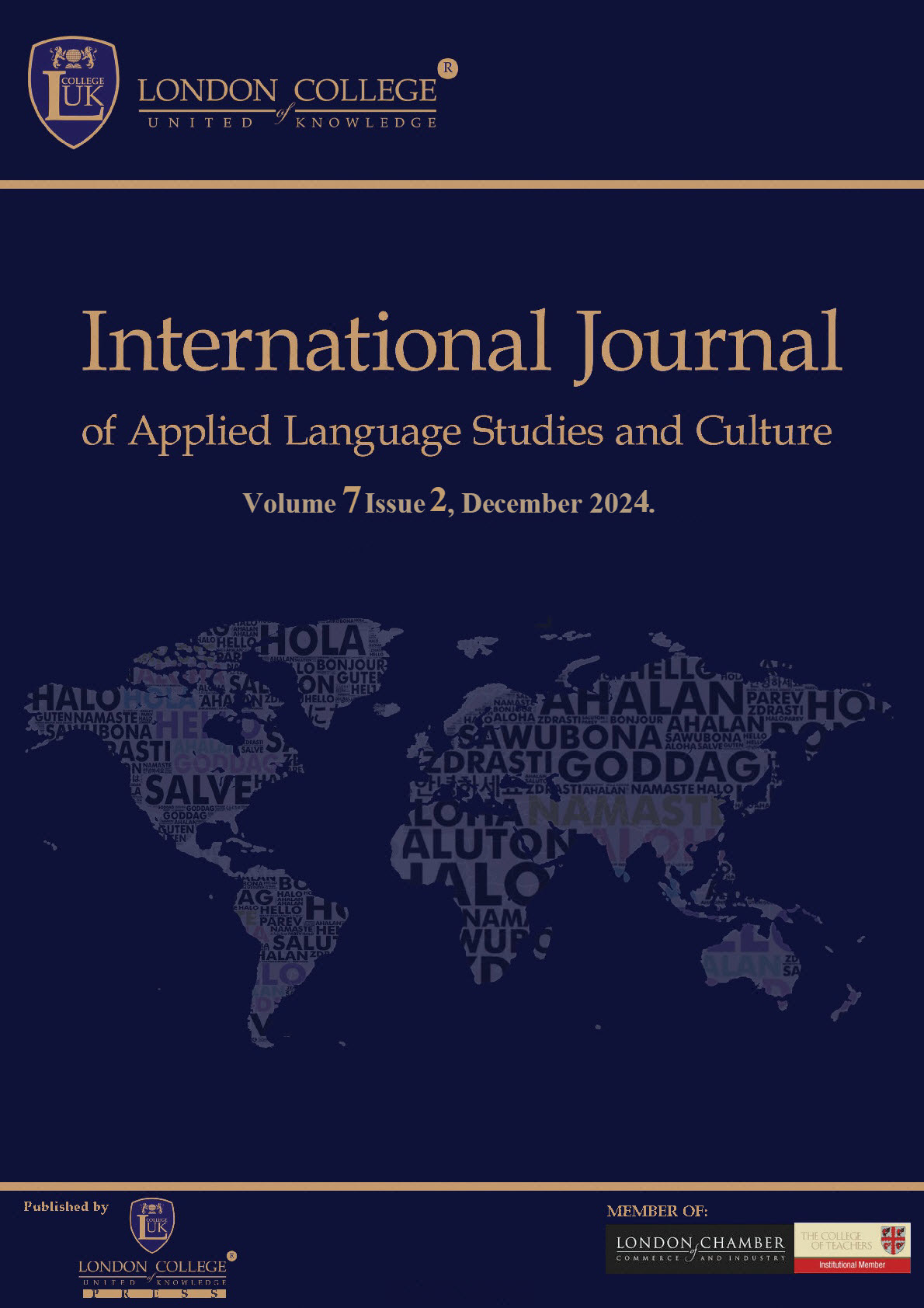Exploring Challenges in Online Learning: at the Faculty of Letters and Human Sciences, Sidi Mohamed Ben Abdellah University, Fes
DOI:
https://doi.org/10.34301/alsc.v8i1.48Keywords:
Online Learning, Traditional Interaction, Face-to-face Classes, digital devices.Abstract
Higher education is characterized by high enrolment rates, which are driven by students' desire for both academic and professional development. Students used to pursue their studies through traditional interactions or in-person classes. However, during the Covid19 pandemic, the education field was forced to rapidly transition from face-to-face classes to online instruction, presenting university students with unprecedented challenges. Several issues have emerged as a result of online learning, including limited access to reliable internet and digital devices, which creates disparities in learning opportunities. In an unstructured environment, many students struggled with time management and self-control. The lack of face-to-face interaction caused feelings of isolation and decreased motivation. Moreover, the learning process was further hindered by technical difficulties and unfamiliarity with digital platforms.
Downloads
References
Abbad, M. M., Morris, D., & de Nahlik, C. (2009). Looking under the Bonnet: Factors Affecting Student Adoption of F-Learning Systems in Jordon. The International Review of Research in Open and Distance Learning
Algahtani, A.F. (2011). Evaluating the Effectiveness of the E-learning Experience in Some Universities in Saudi Arabia from Male Students’ Perceptions, Durham theses, Durham University
Benson, P. (2001). Teaching and researching autonomy in language learning. Harlow, UK: Pearson.
Benson, P. (2007). Autonomy in language teaching and learning. Language Teaching, 40(1), 21-40. Retrieved from:10.1017/s0261444806003958
Candy, P. C. (1991). Self-direction for lifelong learning. San Francisco, CA: Jossey-Bass.
Dublin, L. (2003). If you only look under the street lamps……Or nine e Learning Myths.
European Commission (2001). The eLearning Action Plan: Designing tomorrow’s education. http://www.elearningeuropa.info.
Fry, K. (2001). E-learning markets and providers: some issues and prospects. Education Training, 233-239.
Hamilton, M. (2013). Autonomy and foreign language learning in a virtual learning environment. London, UK: Bloomsbury.
Harandi, R. S. (2015). Effects of e-learning on students’ motivation. Procedia - Social and Behavioral Sciences 181 (2015) 423 – 430. Retrieved from 10.1016/j.sbspro.2015.04.905 Safiyeh Rajaee Harandi
Indreica, E.S. (2014). E-learning Platform: Advantages and Disadvantages on Time Management. E-Learning & Software for Education. (3) 236-243. Retrieved from https://web.b.ebscohost.com/abstract
Khan, B. H. (2005). Managing E-learning: Design, Delivery, Implementation and Evaluation, Hershey, PA: Information Science Publishing.
Keller, C. & Cernerud, L. (2002). Students’ perception of e-learning in university
Kokemuller, N. Negative Effects of Online Courses. Retrieved from https://education.seattlepi.com/negative-effects-online-courses-1094.html
LaRose, R., Gregg, J., & Eastin, M. (1998). Audio graphic tele-courses for the Web: An experiment. Journal of Computer Mediated Communications, 4(2).
Liaw, S.S., Huang, H.M. (2003). Exploring the World Wide Web for on-line learning: a perspective from Taiwan. Educational Technology 40(3): 27–32.
Nikos, K. (2009) Solutions and Innovations in Web-Based Technologies for Augmented Learning: Improved Platforms, Tools and Applications. New York: IGI Global
Northenor, K. (2020). Online school has more negative impacts than positive. Retrieved from https://theroswellsting.com/5200/opinion/online-school-has-morenegative-impacts-than-positive/
Nunan, D. (1996). Towards autonomous learning: Some theoretical, empirical and practical issues. In R. Pemberton & E. S. L. Li, W. W. F. Or & H. D. Pierson (Eds.), Taking control: Autonomy in language learning (pp. 13-26). Hong Kong: Hong Kong University Press.
Oblinger, D. G., & Hawkins, B. L. (2005). The myth about E-learning. Educause review
Perraton, H. (2002). Open and Distance Learning in the Developing World, London: Routledge
Ribbe, E., & Bezanilla, M. J. (2013). Scaffolding learner autonomy in online university courses. Digital Education Review, 24, 98–113. Retrieved from: http://greav.ub.edu/der
Rossi.P.G. (2009). Learning environment with artificial intelligence elements. Journal of e-learning and knowledge society, 5(1), 67-75.
Rovai Alfred, Ponton Michael, Wighting Mervyn, Baker Jason, (2007), A Comparative Analysis of Student Motivation in Traditional Classroom and ELearning Courses (Vol.6 (3), pp. 413-432)
Sandhu, K. (2021) Emerging Challenges, Solutions and Best Practices for Digital Enterprise Transformation. US: IGI Global.
Savin-Baden, M. (2007) A Practical Guide to Problem -Based Learning Online. New York: The Routledge.
Sellers, E. Poor Time Management in Online Learning. Retrieved from https://education.seattlepi.com/poor-time-management-online-learning-1435.html
Schaer. E, Roizard. C, Christmann. N, Lemaitre. A, (2006). Development and Utilization of an E-learning Course on Heat Exchangers at ENSIC, Education for Chemical Engineers, 1(1) 82- 89
Slapac, A et al. (2021) The Handbook of Research on the Global Empowerment of Educators and Students Learning Through Action Research. IGI Global.
Taran Carmen (2005), Motivation Techniques in eLearning, International Conference on Advanced Learning Technologies
Twigg C. (2002). Quality, cost and access: the case for redesign. In The Wired Tower. Pittinsky MS (ed.). Prentice-Hall: New Jersey. p. 111–143.
Welsh ET, Wanberg CR, Brown EG, Simmering M.J. (2003). E-learning: emerging uses, empirical results and future directions. International Journal of Training and Development 2003(7): 245–258
Wentling T.L, Waight C, Gallagher J, La Fleur J, Wang C, Kanfer A. (2000). E-learning - a review of literature. Knowledge and Learning Systems Group NCSA 9.1–73.
Zhong, Q. M. (2018). The evolution of learner autonomy in online environments: A case study in a New Zealand context. Studies in Self-Access Learning Journal, 9(1), 71-85. https://doi.org/10.37237/090106
Downloads
Published
How to Cite
Issue
Section
License
Copyright (c) 2025 Mohamed El-kachlaoui

This work is licensed under a Creative Commons Attribution 4.0 International License.









